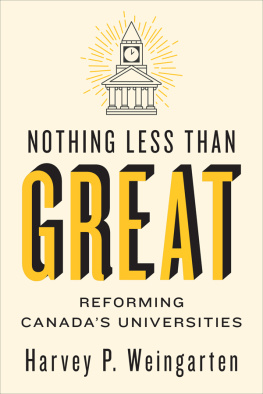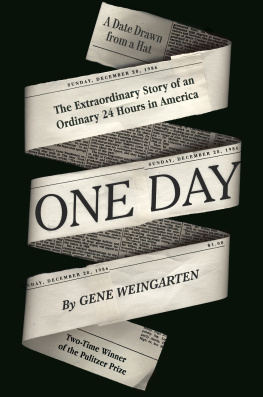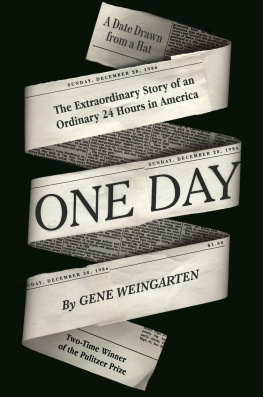
IT TAKES A NATION OF MILLIONS
TO HOLD US BACK
Praise for the series:
It was only a matter of time before a clever publisher realized that there is an audience for whom Exile on Main Street or Electric Ladyland are as significant and worthy of study as The Catcher in the Rye or Middlemarch.... The series... is freewheeling and eclectic, ranging from minute rock-geek analysis to idiosyncratic personal celebrationThe New York Times Book Review
Ideal for the rock geek who thinks liner notes just arent enoughRolling Stone
One of the coolest publishing imprints on the planetBookslut
These are for the insane collectors out there who appreciate fantastic design, well-executed thinking, and things that make your house look cool. Each volume in this series takes a seminal album and breaks it down in startling minutiae. We love these. We are huge nerdsVice
A brilliant series... each one a work of real loveNME (UK)
Passionate, obsessive, and smartNylon
Religious tracts for the rock n roll faithfulBoldtype
[A] consistently excellent seriesUncut (UK)
We... arent naive enough to think that were your only source for reading about music (but if we had our way... watch out). For those of you who really like to know everything there is to know about an album, youd do well to check out Continuums 33 1/3 series of booksPitchfork
For reviews of individual titles in the series, please visit our website at www.continuumbooks.com and 33third.blogspot.com
For a complete list of books in this series, see the back of this book
It Takes a Nation of Millions to Hold Us Back

Christopher R. Weingarten

2010
The Continuum International Publishing Group Inc
80 Maiden Lane, New York, NY 10038
The Continuum International Publishing Group Ltd
The Tower Building, 11 York Road, London SE1 7NX
www.continuumbooks.com
Copyright 2010 by Christopher R. Weingarten
All rights reserved. No part of this book may be reproduced, stored in a retrieval system, or transmitted, in any form or by any means, electronic, mechanical, photocopying, recording, or otherwise, without the written permission of the publishers.
Library of Congress Cataloging-in-Publication Data
Weingarten, Christopher R.
It takes a nation of millions to hold us back / Christopher R.
Weingarten.
p. cm. (33 1/3)
Includes bibliographical references.
eISBN-13: 978-1-4411-4284-9
1. Public Enemy
(Musicalgroup). It takes a nation of millions to hold us back. I.
Title. II.
Series.
ML421.P82W45 2010
782.4216490922dc22
Typeset by Pindar NZ, Auckland, New Zealand
Printed in the United States of America
Table of Contents
Chapter One
Yes... The rhythm, the rebel
The greatest anti-government record ever made was kicked into funky gear by a military parade. The heartbeat of Public Enemys It Takes a Nation of Millions to Hold Us Back was officially defibrillated around 1951, within earshot of martial feet clomping on the Tennessee tarmac. At about 8 or 9 years old, Chattanooga native Clyde Stubblefield attended an Armed Forces parade after school. He heard the snapping, popping snares and was hooked. As he marched home to beat on boxes and tin cans, he took the first steps in changing Americas booty muscles and brain tissue.
By 1965, Stubblefield was the percolating rhythm technician backing the Godfather himself, James Brown, tip-tapping along the equator of the most rhythmically adventurous band around. Stubblefield wasnt the backbone of the James Brown Orchestra;
By the late 60s, every James Brown single graced by Stubblefield introduced a tricky new contraption: the fluid yet jerky waves and crests of Cold Sweat, his favorite beat; the hyperkinetic drum-n-bass jackhammering of I Got the Feeling; the labyrinthine stutter step of Give It Up or Turnit a Loose. They were beats that were works of architecture, calculated with the same meticulous planning used to erect beams in a curvy Frank Gehry building. Before each session, Stubblefield would construct patterns in his head, trying to invent a unique rhythm for each song. But ask him to play his most famous drum break, and he probably couldnt do it.
Born on November 20, 1969, in a studio in Cincinnati, Funky Drummer was never really about Play a groove, split it between two sides of vinyl, see if it sticks. Brown spends this particular session of not playing by ad-libbing and shouting. Being Brown, pretty much everything he said from band directions to winded exhalations has since been regarded as funky gospel.
Brown opens with Pull back the cover... The shades... Good God, its a raid. As Public Enemy tracks like Party for Your Right to Fight teach, the FBI and local police were routinely raiding the California Black Panther Party in 1969, encouraged by FBI Director J. Edgar Hoover and his disruptive covert operations program COINTELPRO. Two weeks after Funky Drummer was recorded, the Chicago Police Department would raid the Black Panthers Chicago chapter, killing Fred Hampton and Mark Clark at point-blank range.
Brown continues: Honky Tonk Women... is all I need... a nod to his good friends the Rolling Stones. They had topped the pop charts with Honky Tonk Women a few months earlier the same time that Brown and Stubblefield were topping the R&B chart with Mother Popcorn, twin totems of youth culture circa 1969, ruling a nation bursting with Vietnam paranoia. Two songs from men claiming to like their women bold and proud, strong enough to heave you over their shoulder. Coincidentally, the Stones Honky Tonk Women, like Brown/Stubblefield songs of the era, opens with a drum break that would be appropriated by hip-hop producers in the 1980s.
About four and a half minutes into Funky Drummer, Brown gives listeners a quick and dirty primer on Stubblefields many achievements. Fellas! One more time, I wanna give the drummer some of this funky soul we got here. The one more time is because Brown had already given the drummer some on the chart-topping Cold Sweat two summers earlier. You dont have to do any soloing, brother, just keep what you got. Dont turn it loose as in Give It Up or... cause its a mother as in Mother Popcorn. When I count to four, I want everybody to lay out and let the drummer go... A-ONE-TWO-THREE-FOUR-GETTIT.
Stubblefield, on his own, tumbles along with the same beat hes been kicking downhill for five and a half minutes. I didnt actually care about the beat, he later said. People ask me to play Funky Drummer all the time, and I really dont know how it goes. It was just something I put together at that moment.rhythm that just came naturally. It was what he was feeling in his body that particular day, what he felt while not playing, caught a little off guard. The now famous syncopated pulse-gallop rattles like the sounds Stubblefield absorbed during his childhood in Chattanooga: the compressed air he would hear boom-banging from the smokestack of the local factory, the locomotives he would hear rumbling around the bowl-shaped city. Ticka-ticka-takk.
* * *
Yall suck, get the fuck off the stage!
Public Enemy were onstage at the Latin Quarter in New York in March of 1987 the groups first time performing in Manhattan. Between 1984 and 1988, the Latin Quarter was a Times Square club that served as the incubator for hip-hops golden era. On any given night, the place would be packed to the gills with famous MCs, hungry record-label reps and the future pioneers of hip-hop, swarming together from every borough. Public Enemy had driven from Long Island stuffed inside the unreliable, smoke-belching yellow-and-white Chevy that frontman Chuck D had borrowed from his dad. This was the very first promotional show for Public Enemys debut album,
Next page










